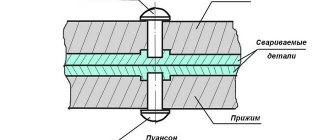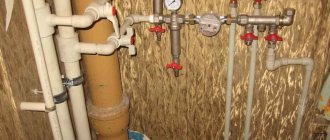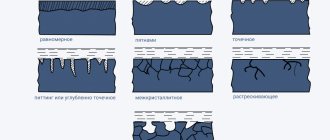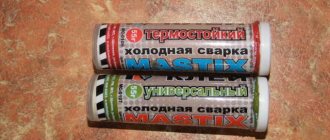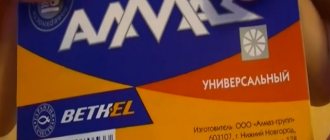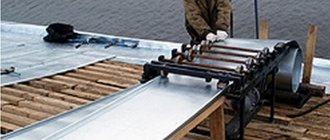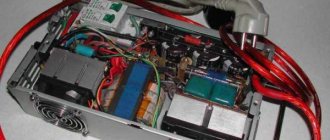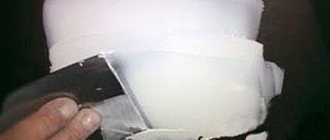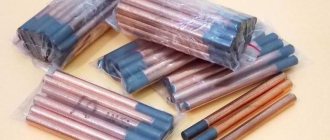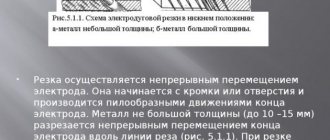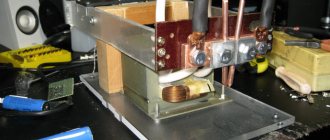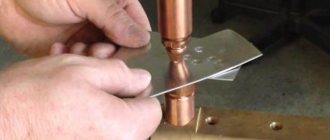There are many options for cold welding products on the market. But not all of them can be useful under large temperature changes. That is why their use in industrial conditions becomes impossible. Mastix's new generation cold welding is far ahead of its competitors in this aspect. It can withstand temperatures from -60 to +150 degrees Celsius. It can be used to connect any objects from any material, since its quality is much higher than that of ordinary glue.
If you strictly follow all the rules, it can be used to effectively connect both broken things and new parts that have not been installed before. But, in addition, cold welding has another important feature - it becomes possible to form lost particles or new elements of parts. Using Mastix cold welding, the master has the opportunity to fill holes, cracks and other damage with it.
Household pipes (even if they are filled with hot water) do not have too high a temperature, which makes it possible to use this type of glue. Welding is supplied by an element that looks like a rod. It combines two components. The first of them is inside, the second is the outer shell. In order to start using them, you just need to mix the composition. The resulting mixture will have a soft shape. This state can last up to seven minutes. After this time, it will begin to dry out little by little until it completely turns into a solid state.
Characteristics
Mastix welding includes the following components:
- Epoxy base.
- Plasticizers.
- Fillers.
- Hardener.
Epoxy polymer is the adhesive base of the cold welding composition.
Plasticizers are designed to increase the resistance of cold welding to mechanical stress, such as shock or vibration.
Fillers are powders of metal and minerals . They are designed to improve Mastix's thermal conductivity and strength properties. Such components make cold welding more resistant to temperature changes.
The hardener (polyamine or amine) is designed to increase the rate of hardening of the composition . Thanks to its action, the product can turn into a solid substance within a few minutes.
Mastix Welding is typically available as a two-piece rod.
The main characteristics of the standard Mastix packaging are shown in the table.
| Characteristic | Meaning |
| Package weight, g | 55 |
| Tmin, °C | -60 |
| Tmax, °C | + (150 …250) |
| tnz, min | 7 |
The table indicates:
- Tmin – minimum operating temperature;
- Tmax – maximum operating temperature;
- tnz – time of the beginning of solidification.
Advantages of Mastix Cold Welding
- This is a universal material that will help glue any surface (it will do it much better than other types of adhesives);
- The manufacturing company produces several types, among which you can find both improved products designed specifically for certain types of material (aluminum, for example), and universal adhesives;
- A beginner can also use the mixture - it is easy to use and no special knowledge is needed to use it;
- The price of the products is quite affordable for any buyer; they can be bought in a huge number of specialty stores;
- Supplied as a two-piece rod, it is very convenient to use;
- This cold welding works over a wide temperature range.
What are the disadvantages of Mastix?
- Takes longer to dry than other adhesives, so may be uncomfortable in some temperatures;
- If, after preparing the mixture for work, lumps form, the quality of work will be reduced (because of this, there is a need for rework).
Peculiarities
The manufacturer Mastix offers a wide range of weldings of this type. Depending on the purpose of a particular type of welding, its composition changes.
Thus, for welding metal products (for example, welding pipelines and plumbing), a modification is proposed that uses a metal filler. This composition ensures high strength and durability of the seam. In addition, this type of welding makes it possible to create a seam on wet surfaces.
For welding parts made of various metals, Mastix is produced, which has special compositions. For example, for welding steel parts, the “Fast Steel” welding type is produced. It contains steel filler. For welding aluminum products, a composition is proposed that includes an aluminum filler.
Mastix has a special composition, which is designed to work at elevated temperatures. This mixture has a red wrapper and can work at temperatures reaching +250 °C.
Cold welds intended for plumbing repairs can hold metal and porcelain together well. Such weldings are characterized by durability and the ability to resist moisture penetration.
Approximate cost of Mastix cold welding on Yandex.market
The most common is the universal type Mastix mixture. This welding can be used in different conditions and for different materials.
GLUE, LIQUID NAILS, FOAM
MASTIX GLUE – COLD WELDINGS
Made in RUSSIA
METAL GLUE
“MASTIX metal adhesive” is intended for quick and reliable gluing, repair, sealing of joints, as well as for the restoration of lost fragments of products made of ferrous and non-ferrous metals operating at temperatures from -60ºС to +150ºС. Provides reliable repair in conditions of high humidity, on wet and oily surfaces, at low temperatures (up to 0°C) provided the mixture is mixed in a warm room.
FILLING / PACKAGING : 55 gr. steel filler / 24 pcs. art. MS 0101
COMPOSITION: epoxy-diane resin up to 20%, amine hardener up to 8%, plasticizer up to 1%, hardening accelerator up to 0.1%, kaolin up to 10%, chalk up to 50%, silicon dioxide up to 2%, iron powder up to 10% .
MODE OF APPLICATION:
• Surfaces (areas) that need to be joined should be cleaned of dirt and rust, cleaned with coarse sandpaper (for metals), if possible degreased (with acetone, etc.) and dried. • Cut off at least 1/3 of the volume of the rod and thoroughly mix both components with your fingers (can be wet) until the mass is uniformly colored. • Apply the resulting mixture to the surface to be repaired. When gluing parts, apply plasticine to both surfaces to be joined, press and fix for 40-45 minutes. When used on wet or oily surfaces, the mixture must be smoothed using back-and-forth movements until it feels like it is sticking to the surface (at the same time, the bond strength is reduced by 20-25% for oily surfaces). • To smooth the surface and give it the required shape, use flat objects moistened with water.
IMPORTANT : if stored for > 18 months or if there are sharp fluctuations in storage t, the outer layer of the cold welding has hardened - heat the cold welding to +60 C. You can use heating radiators, hot water, the top cover of a car engine, etc. for this.
For pipes / For cars / For repairs / Glues under water
UNIVERSAL GLUE BLITZ
“Universal glue BLITZ MASTIX” is intended for quick and reliable gluing, repairing parts and assemblies, sealing joints and containers, for restoring lost fragments of products made of ferrous and non-ferrous metals, plastics, ceramics, wood in various combinations. The operating temperature of repaired products is from -60ºС to +150ºС. Provides reliable repair on wet and oily surfaces, at low (down to -10°C) temperatures (provided the mixture is mixed in a warm room).
FILLING / PACKAGING : 55 gr. steel filler / 24 pcs. art. MS 0107
COMPOSITION: epoxy-diane resin up to 20%, amine hardener up to 8%, plasticizer up to 1%, hardening accelerator up to 2%, kaolin up to 15%, chalk up to 45%, silicon dioxide up to 5%, iron oxide pigments up to 2%..
MODE OF APPLICATION:
• The surfaces (areas) that need to be joined must be cleaned of dirt and rust, be sure to be cleaned with coarse sandpaper (for metals), if possible degreased (with acetone, etc.) and dried. • Cut off at least 1/3 of the volume of the rod and thoroughly mix both components with your fingers (can be wet) until the mass is uniformly colored. • Apply the resulting mixture to the surface to be repaired. When gluing parts, apply plasticine to both surfaces to be joined, press and fix for 15 minutes. When used on wet or oily surfaces, the mixture must be smoothed using back-and-forth movements until it feels like it is sticking to the surface (at the same time, the bond strength is reduced by 20-25% for oily surfaces). • If repairs are necessary at low temperatures, it is recommended that after completing steps 1 and 2, roll the resulting mass into a ball and hold it in your hands until it warms up to +40-50°C (but no more than 4 minutes from the start of stirring), and only then apply it to the area to be repaired. It is recommended to use less than 1/3 of the total mass. • To smooth the surface and give it the required shape, use flat objects moistened with water.
IMPORTANT : if stored for > 18 months or if there are sharp fluctuations in storage t, the outer layer of the cold welding has hardened - heat the cold welding to +60 C. You can use heating radiators, hot water, the top cover of a car engine, etc. for this.
Quickly glues / For cars / For home / Glues under water
GLUE FOR PLUMBING EQUIPMENT
“MASTIX plumbing adhesive” is intended for quick and reliable gluing, repairing parts and assemblies, sealing joints and containers, for restoring lost fragments of products made of ceramics and porcelain, as well as non-ferrous and ferrous metals, plastics, wood in various combinations. The operating temperature of repaired products is from -60ºС to +150ºС.
Provides reliable repair on wet and oily surfaces, at low (down to -10°C) temperatures (provided the mixture is mixed in a warm room).
FILLING / PACKAGING : 55 gr. steel filler / 24 pcs. art. MS 0102
COMPOSITION: epoxy-diane resin up to 20%, amine hardener up to 8%, plasticizer up to 1%, hardening accelerator up to 2%, kaolin up to 15%, chalk up to 40%, titanium dioxide up to 15%, silicon dioxide up to 1%.
MODE OF APPLICATION:
- The surfaces (areas) that need to be connected must be cleaned of dirt and rust, be sure to be cleaned with coarse sandpaper (for metals), if possible degreased (with acetone, etc.) and dried.
- Cut off at least 1/3 of the volume of the rod and thoroughly mix both components with your fingers (if wet) until the mass is uniformly colored.
- Apply the resulting mixture to the surface to be repaired. When gluing parts, apply plasticine to both surfaces to be joined, press and fix for 10-15 minutes. When used on wet or oily surfaces, the mixture must be smoothed using back-and-forth movements until it feels like it is sticking to the surface (at the same time, the bond strength is reduced by 20-25% for oily surfaces).
- If repairs are necessary at low temperatures, it is recommended that after completing steps 1 and 2, roll the resulting mass into a ball and hold it in your hands until it warms up to +40-50°C (but no more than 4 minutes from the start of stirring), and Only then apply to the area to be repaired. It is recommended to use less than 1/3 of the total mass.
- To smooth the surface to be repaired and give it the required shape, use flat objects moistened with water.
IMPORTANT : if stored for > 18 months or if there are sharp fluctuations in storage t, the outer layer of the cold welding has hardened - heat the cold welding to +60 C. You can use heating radiators, hot water, the top cover of a car engine, etc. for this.
For pipes / For plumbing / For repairs / Glues under water
GLUE RAPID STEEL
“Glue Fast Steel MASTIX” is intended for very fast and reliable gluing, repair, sealing of joints, as well as for the restoration of lost fragments of products made of ferrous and non-ferrous metals operating at temperatures from -60ºС to +150ºС.
Provides reliable repair in conditions of high humidity, on wet and oily surfaces, at low temperatures (down to -10°C) provided the mixture is mixed in a warm room.
FILLING / PACKAGING : 55 gr. steel filler / 24 pcs. art. MS 0118
COMPOSITION: epoxy-diane resin up to 20%, amine hardener up to 7%, plasticizer up to 1%, hardening accelerator up to 2%, kaolin up to 10%, chalk up to 50%, silicon dioxide up to 2%, iron powder up to 10%.
MODE OF APPLICATION:
- The surfaces (areas) that need to be connected must be cleaned of dirt and rust, be sure to be cleaned with coarse sandpaper (for metals), if possible degreased (with acetone, etc.), and dried.
- Cut off at least 1/3 of the volume of the rod and thoroughly mix both components with your fingers (if wet) until the mass is uniformly colored.
- Apply the resulting mixture to the surface to be repaired. When gluing parts, apply plasticine to both surfaces being joined, press and fix for 15 minutes. When used on wet or oily surfaces, the mixture must be smoothed using back-and-forth movements until it feels like it is sticking to the surface (at the same time, the bond strength is reduced by 20-25% for oily surfaces).
- If repairs are necessary at low temperatures, it is recommended that after completing steps 1 and 2, roll a ball from the resulting mass and hold it in your hands until it warms up to 40-50 ° C (but no more than 4 minutes from the start of stirring), and only then apply to the area to be repaired. It is recommended to use less than 1/3 of the total mass.
- To smooth the surface and give it the required shape, use flat objects moistened with water.
IMPORTANT : if stored for > 18 months or if there are sharp fluctuations in storage t, the outer layer of the cold welding has hardened - heat the cold welding to +60 C. You can use heating radiators, hot water, the top cover of a car engine, etc. for this.
For pipes / For cars / For repairs / Glues under water
GLUE OF BATTERIES AND PIPES
“Glue for batteries and pipes MASTIX” is intended for quick and reliable gluing, repairing parts and assemblies, sealing joints and containers, for restoring lost fragments of products made of ceramics and porcelain, as well as non-ferrous and ferrous metals, plastics, wood in various combinations. The operating temperature of repaired products is from -60ºС to +150ºС.
Provides reliable repair on wet and oily surfaces, at low (down to -10°C) temperatures (provided the mixture is mixed in a warm room).
FILLING / PACKAGING : 55 gr. steel filler / 24 pcs. art. MS 0105
COMPOSITION: epoxy-diane resin up to 20%, amine hardener up to 8%, plasticizer up to 1%, hardening accelerator up to 2%, kaolin up to 15%, chalk up to 40%, titanium dioxide up to 15%, silicon dioxide up to 1%.
MODE OF APPLICATION:
- The surfaces (areas) that need to be connected must be cleaned of dirt and rust, be sure to be cleaned with coarse sandpaper (for metals), if possible degreased (with acetone, etc.) and dried.
- Cut off at least 1/3 of the volume of the rod and thoroughly mix both components with your fingers (if wet) until the mass is uniformly colored.
- Apply the resulting mixture to the surface to be repaired. When gluing parts, apply plasticine to both surfaces to be joined, press and fix for 10-15 minutes. When used on wet or oily surfaces, the mixture must be smoothed using back-and-forth movements until it feels like it is sticking to the surface (at the same time, the bond strength is reduced by 20-25% for oily surfaces).
- If repairs are necessary at low temperatures, it is recommended that after completing steps 1 and 2, roll the resulting mass into a ball and hold it in your hands until it warms up to +40-50°C (but no more than 4 minutes from the start of stirring), and Only then apply to the area to be repaired. It is recommended to use less than 1/3 of the total mass.
- To smooth the surface to be repaired and give it the required shape, use flat objects moistened with water.
IMPORTANT : if stored for > 18 months or if there are sharp fluctuations in storage t, the outer layer of the cold welding has hardened - heat the cold welding to +60 C. You can use heating radiators, hot water, the top cover of a car engine, etc. for this.
Optimal volume 55g / 10 minutes of fixation / For batteries and pipes / Glues under water
SEALANT FOR RADIATORS
“Sealant for radiators MASTIX” is intended for quick and reliable repair and sealing of radiators of cars, trucks, agricultural machinery, made of ferrous and non-ferrous metals, operating at temperatures up to +150ºС.
Provides reliable repair on wet and oily surfaces, at low (down to -10°C) temperatures (provided the mixture is mixed in a warm room).
FILLING / PACKAGING : 55 gr. steel filler / 24 pcs.
COMPOSITION: epoxy-diane resin up to 20%, amine hardener up to 8%, plasticizer up to 1%, hardening accelerator up to 2%, kaolin up to 15%, chalk up to 45%, silicon dioxide up to 5%, iron oxide pigments up to 2%.
MODE OF APPLICATION:
- The surfaces (areas) that need to be connected must be cleaned of dirt and rust, be sure to be cleaned with coarse sandpaper (for metals), if possible degreased (with acetone, etc.) and dried.
- Cut off at least 1/3 of the volume of the rod and thoroughly mix both components with your fingers (if wet) until the mass is uniformly colored.
- Apply the resulting mixture to the surface to be repaired. When gluing parts, apply plasticine to both surfaces to be joined, press and fix for 15 minutes. When used on wet or oily surfaces, the mixture must be smoothed using back-and-forth movements until it feels like it is sticking to the surface (at the same time, the bond strength is reduced by 20-25% for oily surfaces).
- If repairs are necessary at low temperatures, it is recommended that after completing steps 1 and 2, roll the resulting mass into a ball and hold it in your hands until it warms up to +40-50°C (but no more than 4 minutes from the start of stirring), and Only then apply to the area to be repaired. It is recommended to use less than 1/3 of the total mass.
- To smooth the surface to be repaired and give it the required shape, use flat objects moistened with water.
IMPORTANT : if stored for > 18 months or if there are sharp fluctuations in storage t, the outer layer of the cold welding has hardened - heat the cold welding to +60 C. You can use heating radiators, hot water, the top cover of a car engine, etc. for this.
10 minutes of fixation / For cars / For radiator repair / Glues under water
HEAT-RESISTANT GLUE
“Heat-resistant glue MASTIX” is intended for reliable gluing, repair, sealing of joints, as well as for the restoration of lost fragments of products made of ferrous and non-ferrous metals, heat-resistant plastics, ceramics, operating at temperatures from -60ºС to +250ºС
Provides reliable repair on wet and oily surfaces, at low (down to -10°C) temperatures (provided the mixture is mixed in a warm room).
FILLING / PACKAGING : 55 gr. steel filler / 24 pcs.
COMPOSITION: epoxy-novolac resin up to 15%, epoxy-dian resin up to 5%, amine hardener up to 6%, plasticizer up to 1%, hardening accelerator up to 1%, kaolin up to 30%, chalk up to 30%, iron powder up to 12% , titanium dioxide up to 1%.
MODE OF APPLICATION:
- The surfaces (areas) that need to be joined must be cleaned of dirt and rust, be sure to be cleaned with coarse sandpaper (for metals), if possible degreased (with acetone, etc.) and dried.
- Cut off at least 1/3 of the volume of the rod and thoroughly mix both components with your fingers (if wet) until the mass is uniformly colored.
- Apply the resulting mixture to the surface to be repaired. When gluing parts, apply plasticine to both surfaces to be joined, press and fix for 15 minutes. When used on wet or oily surfaces, the mixture must be smoothed using back-and-forth movements until it feels like it is sticking to the surface (for oily surfaces, the bond strength is reduced by 20-25%).
- To smooth the glued surface and give it the required shape, use flat objects moistened with water.
IMPORTANT : if stored for > 18 months or if there are sharp fluctuations in storage t, the outer layer of the cold welding has hardened - heat the cold welding to +60 C. You can use heating radiators, hot water, the top cover of a car engine, etc. for this.
Heat resistant / For cars / For batteries and pipes / Adhesives under water
They also ask for a similar product:
- STYROPE Glue
- Wallpaper glue QUELYD
- Wallpaper glue QUALITY
- Wallpaper glue CLEO
- Wallpaper glue EXCLUSIVE
- Liquid nails QUALITY
- TYTAN - Foam, Adhesive
- POLYMER Glue
- SOUDAL-Foam, Sealant
Advantages and disadvantages
Main advantages of Mastix:
- allows you to qualitatively connect parts from different materials;
- Available in various modifications with improved characteristics for welding specific materials;
- ease of use (no special skills or additional training required);
- Available for use in different temperature conditions;
- low cost.
Flaws:
- relatively long hardening time (6-7 minutes). This drawback may affect when carrying out urgent work;
- When preparing the mixture, lumps often form , which can impair the quality of welding.
Areas of use
Depending on the composition of the Mastix cold welding modification, it can be used to connect:
- parts and products made of metal (steel, aluminum);
- metal and non-metal parts;
- metal products operating at high temperatures (up to +200 degrees);
- sanitary ware, tile products, porcelain, marble.
Along with gluing, Mastix can be used to seal chips and cracks. The frozen mixture will not be able to withstand large mechanical loads, but it can be used to repair moving mechanisms. For example, cars.
In the household, this product can also be used to repair furniture, interior items and household utensils.
Varieties
produces several types of cold welding under one brand.
- “Universal Blitz” glue is the most popular mixture. Used for gluing any materials: “Takes” everything: cast iron, steel, non-ferrous metals, ceramics, glass, rubber, plastic, soft and dense wood. The connection can withstand heating up to +200°C. Reviews about the glue are only positive.
- Universal glue is slightly inferior to Blitz universal in terms of heat resistance; it works in the temperature range from -60°C to +150°C. Characterized by rapid polymerization.
- Heat-resistant cold welding is recognizable by its bright red packaging. Retains adhesive properties when heated to +250°C.
Types of cold welding Mastix
Specialized compositions for narrow areas of use are available for sale:
- Mastix for plumbing is not afraid of high humidity; it contains alcohol, which binds to excess moisture. Used to eliminate leaks in utility lines and process pipelines. Turns white after polymerization, suitable for repairing sanitaryware.
- “Fast Steel” contains a large proportion of metal powder and is good at restoring lost fragments and chips on cast iron. Used for joining all types of steels.
- The mixture for aluminum products also contains metal powder, aluminum. Ideally connects difficult-to-weld duralumin alloys.
How to apply
To carry out a cold welding operation, you must prepare:
- Mastix welding compound.
- Abrasive material (sandpaper).
- Solvent.
- Clamp.
- Latex gloves.
Some types of Mastix allow you to glue parts without cleaning them from dirt and moisture. But it must be taken into account that in this case the strength of the seam deteriorates by 20-30%. Therefore, before cold welding, the surfaces of the parts must be properly prepared.
Cold welding algorithm:
- Clean the connecting surfaces of the parts from scale, rust and other contaminants.
- Degrease surfaces.
- Unwrap the Mastix and peel off the stem piece . When determining the size of a piece of the mixture, it is necessary to take into account the initial hardening time (6-7 minutes).
- Put rubber gloves on your hands, wet your fingers with water and knead a piece of the mixture well . When mixed correctly, the shade of the mass will be uniform, without lumps or inclusions.
- Apply the mixture to the surfaces to be joined and connect them . To eliminate the hole, it is desirable that part of the mass gets inside it.
- Secure the connection mechanically.
- Maintain fixation for 15-18 minutes . Complete hardening of the material occurs within 1 hour to 24 hours.
- If you need to make a second layer, then before applying it you must wait until the first layer has completely hardened , which should not exceed 6 mm.
Instructions for use
Before starting work, you must study the instructions for use from the manufacturer of cold welding Mastix. Work must be carried out in the following sequence:
- First, the working surfaces are prepared: cleaning from scale, traces of rust and other contaminants. Surfaces need to be wiped, dried, degreased (if possible).
- At the second stage, you need to separate a third of the rod and mix the components with rubber gloves soaked in water. Proper mixing will be indicated by the shade of the mixture: uniform, without lumps, noticeable inclusions, or streaks.
- At the third stage, the resulting mixture must be applied to the two surfaces to be joined, connected to each other, and secured.
- The duration of fixing parts is 15-18 minutes.
If the surfaces are dirty, oiled, or moistened, then the strength characteristics of the resulting joint are reduced by approximately 20-30%. This is when compared with prepared and clean surfaces.
If work is carried out in conditions of negative temperatures, then during the preparation process, warm the mixture in your hands for several minutes. Be sure to store in a warm room before using in the cold.
By the way, according to my observations, all tubes contain generalized instructions. Which contains recommendations separately for all types of Mastix brand glue.
What to remember
Mastix contains epoxy and amine resins, which are toxic and hazardous to human health.
Therefore, when using cold welding, the following must be considered:
- Do not use to repair utensils in which food is prepared or stored..
- Keep out of reach of small children.
- Avoid contact of the mixture with skin and use rubber gloves.
- If glue gets on your skin, wash the area of contact with soap and water or wipe it with alcohol.
- If crumbs of the mixture get into the eye, rinse the eye and seek help from a doctor.
- It is advisable to carry out work with cold welding in a room with ventilation , since during polymerization the epoxy resin included in Mastix emits harmful fumes.
- When sanding a frozen seam, goggles and a respirator must be used to protect the respiratory tract and eyes from the resulting dust..
